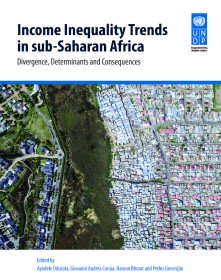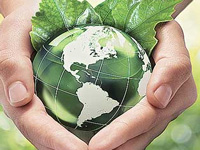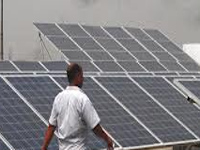Asia-Pacific Disaster Report 2017
Asia and the Pacific is the region most affected by natural disasters which hit hardest at the poorest countries and communities. And on present trends, as more migrants crowd into slums and shanty towns
Asia and the Pacific is the region most affected by natural disasters which hit hardest at the poorest countries and communities. And on present trends, as more migrants crowd into slums and shanty towns
More than 8,000 million metric tons of plastic have been made since the beginning of large-scale plastic production in the 1950s. As a consequence, plastic debris is present in all ecosystems, including
Water and sanitation, as absolute necessities for people, planet and prosperity, are at the very core of sustainable development. In embarking upon the 2030 Agenda for Sustainable Development with a dedicated
The Asia-Pacific Countries with Special Needs Development Report 2016 explores ways to adapt the 2030 Agenda for Sustainable Development to the unique circumstances, capacities and levels of development
<p>The Policy Brief 2020: Advancing SDG7 in Asia and the Pacific was prepared by ESCAP in collaboration with the Asian Development Bank and the custodian agencies for the SDG 7 indicators. The Policy Brief
The United Nations Conference on Sustainable Development (UNCSD) in June 2012—commonly referred to as Rio+20—left many perplexed. If a number of advances were made, the results fell well short of what

India accounts for the largest number of TB cases in the world and 60 per cent of the global burden of leprosy. At 27.9 lakh, India’s TB incidence in 2016 was down marginally from the previous year’s 28.4
Africa is projected to experience increasing climate hazards for the remainder of the 21st century, which are likely to pose a challenge to hydropower generation in Africa. To minimise the adverse effects
Climate changes and the loss of biodiversity are twin challenges. Each threatens to undermine efforts to achieve sustainable development. This paper, drawing upon the fourth edition of the Global Biodiversity

India is the host to this year’s World Environment Day and the theme is ‘Beat Plastic Pollution.’ Every year, June 5 is observed as World Environment Day to raise awareness and increase government action

The 2030 Agenda for Sustainable Development and its 17 Sustainable Development Goals (SDGs) underscore the need to address broad inequalities in their quest to ‘leave no-one behind.’ Income Inequality

NEW DELHI: For India, World Environment Day 2018 is not a "symbolic" celebration, but a mission, Union environment minister Harsh Vardhan said on Tuesday. The minister told people to take care of their

With rich nations lining up to be part of India's new thrust to clean energy and sustainable development, France will also formally extend its help during the multiple bilateral meetings over the next
The International Center for Comparative Environmental Law (CIDCE) has outlined an innovative methodology for the development of science-based legal indicators of effectivity. This paper illustrates their
<p>Global trade rules on the support governments can provide to their farm sectors need urgent reform if countries are to make progress on Agenda 2030—and in particular on Sustainable Development
A new study report, dubbed “Addressing Sustainable Development Goals (SDGs) 2: The Ghana Zero Hunger Strategic Review”, has identified gaps and proposed a roadmap to ensure Ghana achieves Zero Hunger by
The transformation of the global energy system to reduce carbon dioxide (CO2) emissions requires engagement at all levels of society – from communities, regions and governments to numerous other stakeholders
Based on years of research, the assessment of environmental flows (or E-flows) has begun to take on a strategic role in the efforts of developing countries to keep their rivers healthy. With support from
The High-level Experts and Leaders Panel on Water and Disasters (HELP), the network to mobilize political will for combating water-related disasters, has developed the “Principles on Investment and Financing
Africa is rising. But at the same time, Africa is the continent with the largest number of people, (390 million) living in extreme poverty. The UN’s Food and Agriculture organization states in a new